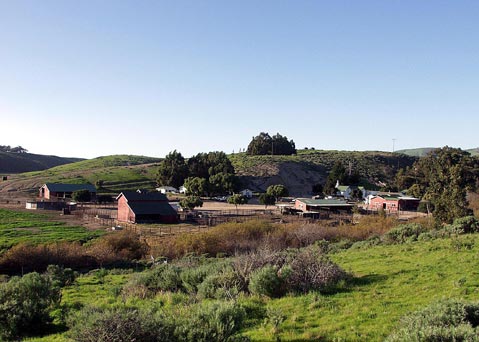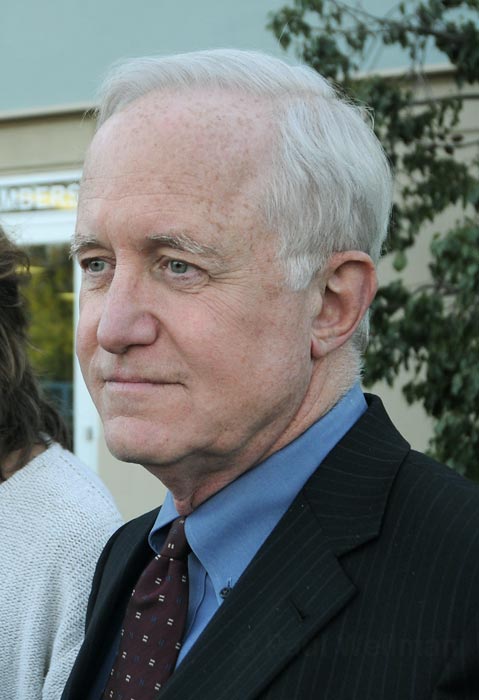The Bixby Mystery
Eyebrows Raised About Ranch’s Recent Moves

The rumors and speculation began more than a month ago. It had been nearly four years since an out-of-town investment firm threw down some $136 million to buy the historic Bixby Ranch, and while conjecture began almost immediately about what could and would become of the 25,000-acre hunk of coastal paradise, there had been no reason to suspect anything nefarious or even out of the ordinary was afoot on the centuries-old cattle and agriculture holding. And while Bixby representatives remain adamant that such is still the case, two recent developments have watchdogs wondering differently. “I don’t know much for sure, but it certainly does seem like something is happening,” observed Gaviota Coast Conservancy President Mike Lunsford earlier this week.
First came grumblings from within the ranch itself and nearby neighbors that, depending on who was spreading the rumors, anywhere from a few to several hundred acres of cattle-grazing land had been suddenly tilled. By no means an uncommon occurrence, it was more the timing of the earth-moving that was questionable, as it happened just as native grasses and other such primary food sources for the cattle were beginning to sprout. To some, it indicated a lack of understanding or, more damning, a decided lack of long-term commitment to maintaining the cattle operation. Either way, the rumors came as the California Coastal Commission and the Santa Barbara County Board of Supervisors engaged in a highly publicized wrestling match over county coastal land-use code. Though still unresolved, the feeling this past fall and early winter was that the Coastal Commission was going to impose a rule into Santa Barbara’s local code that would require fairly extensive permits and fees and public hearings for any sort of “agricultural intensification” or change in use of ag land that differed from what had been done on the land in the past 10 years. Given this, some speculated that the unseasonable churning of dirt was nothing more than a preemptive move against possible new regulations, while others saw it as a flagrant example of exactly what the Coastal Commission is hoping to prevent with its controversial regulatory recommendations.

According to attorney Steve Amerikaner, who has worked as the new Bixby owners’ Santa Barbara spokesperson since they purchased the property, none of the above is true. To hear him tell it, not only was the plowing “completely independent” of any goings-on with the Coastal Commission, but it wasn’t even plowing. “They are not plowing the land,” explained Amerikaner about the work. “They are just turning over the top nine inches or so of soil. … It is a customary ranch operation.”
But before the weird tilling gossip went away, another much more typical red flag went up indicating that changes may be in the works out Bixby way. For the second time in as many years, Coastal Management Resources (the official business identity of the new Bixby ownership) is seeking to purchase a massive amount of State Water rights from the Carpinteria Valley Water District (CVWD). In fact, according to the agenda for the CVWD’s February 9 meeting, the Bixby group is looking to buy up to 1,000 acre-feet of State Water rights. (For comparison’s sake, CVWD General Manager Charles Hamilton figures one acre-foot of water provides more than enough for an entire year for “three to five average Santa Barbara homes.”) Though he called the talks “very preliminary,” Hamilton explained that the district is well aware that deciding to sell water rights — a fundamental foundation to any sort of development be it big or small — to cherished and mostly untouched property like the Bixby Ranch “puts us right at the front end of a big land-use issue.” According to Hamilton, the reason the first attempt by Bixby to purchase the water fell through was the district’s unease with potentially having to shoulder the fiscal burden of the litigation from anti-development entities that would likely follow such a sale.
Once again, Amerikaner explains that any alarm about Bixby’s recent behavior is unnecessary. In his estimation, the water request is little more than a pro-active maneuver meant to insulate the existing ranch operations from future drought. “The owner just wants to acquire the option,” said Amerikaner. “It is an insurance policy against water shortages and nothing more.” Asked specifically if it might also be a precursor to future development plans — after all, there are 100 legally buildable lots on the property — Amerikaner scoffed, “No, not at all. The purpose of it is to assist with the ranch’s current needs and agricultural operations.”



